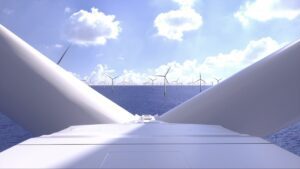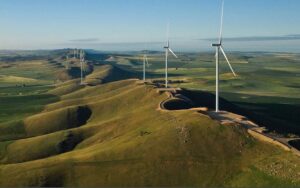It’s that time of year again. Time to consider what the big trends of the next 12 months might be. And for Australia, in the energy space, there is no prizes for guessing the big mover in 2016: battery storage.
This will not be the only thing of importance, however. There will be ambitious plans for decarbonisation pushed by states, regional and local governments. The push against wind and solar will become the new denialism, arguments will rage about consumer tariffs as networks seek to protect their revenues, and there will be new technologies in the market such as large scale solar and wave energy. And, of course, there will be an election.
So here are our top 10 trends. Feedback welcomed. See you in 2016!
Battery Storage:
Battery storage will be the big thing of 2016, as Australia becomes the first mass market for the technology in the world, thanks to its soaring network costs, excellent sun, and the high penetration of rooftop solar. The Tesla Powerwall continues to attract most casual interest (judging by the response to our articles), and has already signed up some high profile partners.
But many other brands are competing in the same market, and its prices are being more than matched by its rivals, including LG and others, who have brought their prices down significantly. Some customers are reporting quote reductions of 50 per cent in the last six months. And with demand likely to be boosted as 230,000 households move off premium feed in tariffs later this year, the market will be interesting to watch.
And if anyone tries to tell you that battery storage won’t take off because the payback time is too high, ask them what their payback time for their car, or their lounge suite was. Many people are simply not going to care.
A new form of denialism – against wind and solar
South Australia will pass through the 50 per cent mark for wind energy and solar power in 2016, quite possibly becoming the first large scale grid in the developed world to reach such a level of penetration for variable renewable energy sources. That’s a fantastic feat and one that is creating a lot of excitement in Australia, and a lot of interest around the world, particularly as South Australia is now aiming to go as close to 100 per cent as it can.
But it is also creating a lot of foreboding. If South Australia can manage such high levels of wind and solar in a relatively isolated grid, then why can’t the rest of the world? So expect the fossil fuel industry – coal and nuclear – and their puppets and muppets in the mainstream media – to look for flaws at every occasion, and seek to blame wind and solar for every outage and price hike that is experienced.
Naomi Klein this week wrote about the new form of denialism, focused on renewables, and we noted the new war on wind and solar from the right wing media. The clean energy industry will need to be on its toes to respond to the predictable. Perhaps they should do what the incumbents do, and take the mainstream reporters to nice lunches, or even the footy.
Network charges
Call it the battle between pro-sumers (those producing their own energy) and the incumbent utilities, or the cost of the democratisation of energy. One key and contentious issue this year will be the structure of network charges, already the highest in the world, thanks to largely unchecked growth due to over-ambitious demand forecasts. Networks don’t want to take write-downs on those assets, so they want the customer to pay for it. The problem is that the increasing use of solar is cutting conventional sources of revenues, based around how much people use, and battery storage will accelerate that.
So the networks want to slice and dice tariff arrangements so their revenues are protected. Under the veil of “cost reflective” pricing, they are proposing changes that they admit will see the rollout of rooftop solar cut by half. But critics say the tariffs are anything but cost reflective, and are simply a revenue grab. Expect this issue to figure large in the coming 12 months.
Grid level storage:
Households and businesses are not the only ones interested in battery storage and other forms of storage. Networks are also finding that storage is helping address some significant problems on their elongated grids, avoiding the need for upgrades and expansion, and reducing the cost of maintenance as well as allowing for even more renewable energy on their networks.
Ergon Energy has introduced a bunch of 100kWh battery installations on its network, an initiative it says will cut costs by one third in those areas. Other networks are also trialling the technology – including in Victoria with the first mobile 1MWh battery storage installation, but installations may be slower than otherwise because the regulators got too lazy and punted a proposal to reset the rules to encourage battery storage down to the next regulatory reset that begins in 2019.
Micro-grids
The arrival of battery storage is creating new interest in micro-grids – be it off-grid locations like mines and remote towns, taking regional centres off the grid (to minimise the huge cost of grid connection), or building new suburbs without any grid connection at all, as proposed by US giant Brookfield and developer LFW near Newcastle, or the Ross Garnaut-chaired Zen Energy in South Australia.
Siemens and Brookfield are putting a proposal to the Byron Bay shire to create a renewables-focused micro-grid for that region in northern NSW, while smaller towns such as Tyalgum are considering similar proposals. Even the utilities think it a good idea, or at least inevitable, because it will relieve them of big charges to service remote towns.
Push to 100 per cent renewable energy
South Australia and the ACT are not the only areas to lead the way towards 100 per cent renewable energy. Plenty of towns have a similar ambition. Uralla has outlined a detailed plan, and numerous other towns are considering the same path – Newstead and Yackandanda in Victoria, Lismore in NSW and countless smaller towns.
Indeed, the push for 100 per cent renewable energy will be a “bottom up” phenomenon. But the whole world could go that way, and save money doing so, if it could overcome the cultural and political resistance.
Battle over the RET
The renewable energy target is still not functioning. The Coalition government’s attempt to kill the RET, and then to slash it, has raised expectations from utilities that they could do it again. So the utilities are not signing any contracts, despite the fact that the price of certificates has soared to around $77/MWh. That should be more than enough to get renewables built, but the financiers are coy – given the ongoing uncertainty about energy market rules.
So, the RET has become a massive game of bluff. Some projects will go ahead in the near term, financed by deep-pocketed equipment suppliers who can afford to take the risk. This will be one of the key business and political issues of the year.
Growth of Big Solar
Almost all of Australia’s large scale renewable energy development to date has been wind farms, much to the chagrin of coal fired generators such as Alinta in South Australia, and a whole bunch of conservative politicians who don’t like the look of them.
But the future may be dominated by big solar, with several gigawatts of proposals already approved by councils, and a massive land grab from competing developers, particularly in Queensland.
ACT to continue to lead the way
With the national target stalled, the ACT government will continue to lead the path to new developments, thanks to its commitment to 100 per cent renewable energy by 2025, and its successful reverse auction program. Already, it has signed agreements for 50MW of solar PV, nearly half of which is completed, and 200MW of wind farms have also been contracted, and are now being built.
Another 200MW of wind capacity will be awarded early in the new year, to be followed by another 109MW of large scale renewables, which in turn will help fund the deployment of 36MW of battery storage in households and businesses in Canberra. At least someone has a plan.
Wave energy strikes a blow
Wave energy is attracting lot of interest, a combination perhaps of Australians’ love of the ocean, and the fact that the technologies are edging closer to maturity. Carnegie Wave Energy has installed the world’s first multi-machine wave energy array off the coast of Fremantle, and has also used the machines to supply desalinated water to the Garden Island naval base.
Another technology trial has been installed near Port Fairy in Victoria. But Carnegie is leading the way, and in 2016 will work on its full sized, 1MW wave energy machines, and roll out its plans for renewable based micro grids that could use wave power to meet the needs of island, remote communities and edge of grid towns.
That was ten. But there is one other big factor to play a role in 2016, and that is the federal election. Carbon price anyone?
Sometime in 2016, the Coalition government needs to go to an election. Prime Minister Turnbull has already dumped Abbott-era rhetoric, but will be go to the polls with Abbott-era policies? Or will he wait to do his about face until after the 2017 review of Australia’s climate policies.
Labor has a 50 per cent renewable energy target and a 45 per cent emissions reduction target for 2030, but only the Greens have a policy suite that actually matches the 2C target that the Australian government signed up for in Paris. But thanks to Bill Shorten’s disastrous performance in the opinion polls, a change of government does not look likely, and as long as there is no carbon price, no emissions standard or other mechanism to force out brown coal generators, then progress will be slow.








